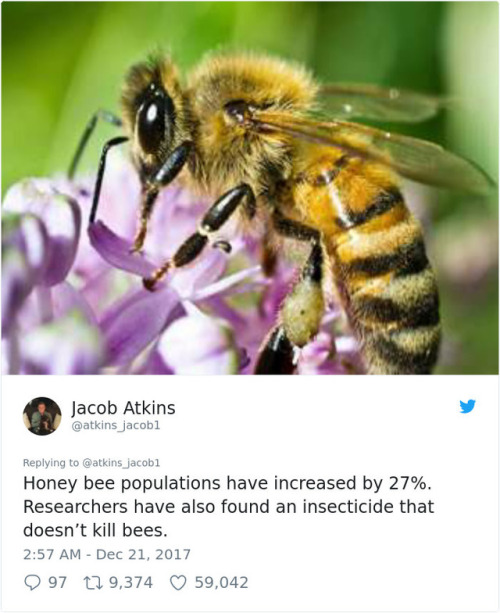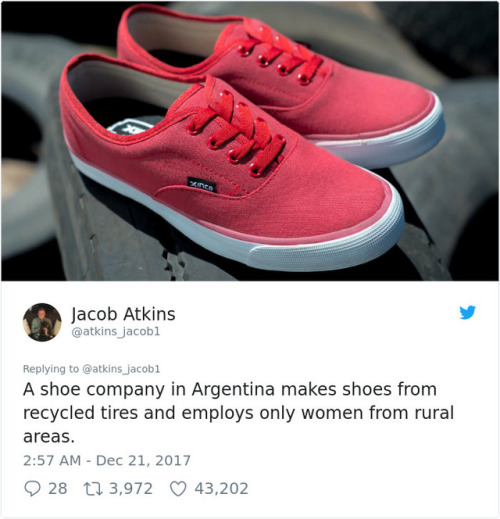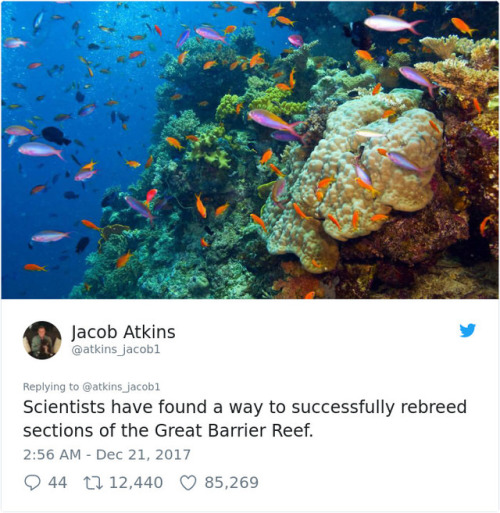103 posts
Latest Posts by redplanet44 - Page 2
Solar System 10 Things to Know: Planetary Atmospheres
Every time you take a breath of fresh air, it’s easy to forget you can safely do so because of Earth’s atmosphere. Life on Earth could not exist without that protective cover that keeps us warm, allows us to breathe and protects us from harmful radiation—among other things.
What makes Earth’s atmosphere special, and how do other planets’ atmospheres compare? Here are 10 tidbits:
1. On Earth, we live in the troposphere, the closest atmospheric layer to Earth’s surface. “Tropos” means “change,” and the name reflects our constantly changing weather and mixture of gases.

It’s 5 to 9 miles (8 to 14 kilometers) thick, depending on where you are on Earth, and it’s the densest layer of atmosphere. When we breathe, we’re taking in an air mixture of about 78 percent nitrogen, 21 percent oxygen and 1 percent argon, water vapor and carbon dioxide. More on Earth’s atmosphere›

2. Mars has a very thin atmosphere, nearly all carbon dioxide. Because of the Red Planet’s low atmospheric pressure, and with little methane or water vapor to reinforce the weak greenhouse effect (warming that results when the atmosphere traps heat radiating from the planet toward space), Mars’ surface remains quite cold, the average surface temperature being about -82 degrees Fahrenheit (minus 63 degrees Celsius). More on the greenhouse effect›

3. Venus’ atmosphere, like Mars’, is nearly all carbon dioxide. However, Venus has about 154,000 times more carbon dioxide in its atmosphere than Earth (and about 19,000 times more than Mars does), producing a runaway greenhouse effect and a surface temperature hot enough to melt lead. A runaway greenhouse effect is when a planet’s atmosphere and surface temperature keep increasing until the surface gets so hot that its oceans boil away. More on the greenhouse effect›

4. Jupiter likely has three distinct cloud layers (composed of ammonia, ammonium hydrosulfide and water) in its “skies” that, taken together, span an altitude range of about 44 miles (71 kilometers). The planet’s fast rotation—spinning once every 10 hours—creates strong jet streams, separating its clouds into dark belts and bright zones wrapping around the circumference of the planet. More on Jupiter›

5. Saturn’s atmosphere—where our Cassini spacecraft ended its 13 extraordinary years of exploration of the planet—has a few unusual features. Its winds are among the fastest in the solar system, reaching speeds of 1,118 miles (1,800 kilometers) per hour. Saturn may be the only planet in our solar system with a warm polar vortex (a mass of swirling atmospheric gas around the pole) at both the North and South poles. Also, the vortices have “eye-wall clouds,” making them hurricane-like systems like those on Earth.
Another uniquely striking feature is a hexagon-shaped jet streamencircling the North Pole. In addition, about every 20 to 30 Earth years, Saturn hosts a megastorm (a great storm that can last many months). More on Saturn›

6. Uranus gets its signature blue-green color from the cold methane gas in its atmosphere and a lack of high clouds. The planet’s minimum troposphere temperature is 49 Kelvin (minus 224.2 degrees Celsius), making it even colder than Neptune in some places. Its winds move backward at the equator, blowing against the planet’s rotation. Closer to the poles, winds shift forward and flow with the planet’s rotation. More on Uranus›

7. Neptune is the windiest planet in our solar system. Despite its great distance and low energy input from the Sun, wind speeds at Neptune surpass 1,200 miles per hour (2,000 kilometers per hour), making them three times stronger than Jupiter’s and nine times stronger than Earth’s. Even Earth’s most powerful winds hit only about 250 miles per hour (400 kilometers per hour). Also, Neptune’s atmosphere is blue for the very same reasons as Uranus’ atmosphere. More on Neptune›

8. WASP-39b, a hot, bloated, Saturn-like exoplanet (planet outside of our solar system) some 700 light-years away, apparently has a lot of water in its atmosphere. In fact, scientists estimate that it has about three times as much water as Saturn does. More on this exoplanet›

9. A weather forecast on “hot Jupiters”—blistering, Jupiter-like exoplanets that orbit very close to their stars—might mention cloudy nights and sunny days, with highs of 2,400 degrees Fahrenheit (about 1,300 degrees Celsius, or 1,600 Kelvin). Their cloud composition depends on their temperature, and studies suggest that the clouds are unevenly distributed. More on these exoplanets›

10. 55 Cancri e, a “super Earth” exoplanet (a planet outside of our solar system with a diameter between Earth’s and Neptune’s) that may be covered in lava, likely has an atmosphere containing nitrogen, water and even oxygen–molecules found in our atmosphere–but with much higher temperatures throughout. Orbiting so close to its host star, the planet could not maintain liquid water and likely would not be able to support life. More on this exoplanet›
Read the full version of this week’s Solar System 10 Things to Know HERE.
Make sure to follow us on Tumblr for your regular dose of space: http://nasa.tumblr.com.
Solar powered sea slugs shed light on search for perpetual green energy

The sea slug, Elysia chlorotica, steals millions of green-colored plastids, which are like tiny solar panels, from algae. Credit: Karen N. Pelletreau/University of Maine
A Northeast sea slug sucks raw materials from algae to provide its lifetime supply of solar-powered energy, according to a study by Rutgers University-New Brunswick, USA.
‘It’s a remarkable feat because it’s highly unusual for an animal to behave like a plant and survive solely on photosynthesis,’ said Debashish Bhattacharya, senior author of the study and professor in the Department of Biochemistry and Microbiology at Rutgers-New Brunswick. ‘The broader implication is in the field of artificial photosynthesis. That is, if we can figure out how the slug maintains stolen, isolated plastids to fix carbon without the plant nucleus, then maybe we can also harness isolated plastids for eternity as green machines to create bioproducts or energy. The existing paradigm is that to make green energy, we need the plant or alga to run the photosynthetic organelle, but the slug shows us that this does not have to be the case.’
The sea slug Elysia chlorotica, a mollusk that can grow to more than 2 inches long, has been found in the intertidal zone between Nova Scotia, Canada, and Martha’s Vineyard, Massachusetts, as well as in Florida. Juvenile sea slugs eat the nontoxic brown alga Vaucheria litorea and become photosynthetic – or solar-powered – after stealing millions of algal plastids, which are like tiny solar panels, and storing them in their gut lining, according to the study published online in the journal Molecular Biology and Evolution.
This particular alga is an ideal food source because it does not have walls between adjoining cells in its body and is essentially a long tube loaded with nuclei and plastids, Bhattacharya said. ‘When the sea slug makes a hole in the outer cell wall, it can suck out the cell contents and gather all of the algal plastids at once,’ he said.
Read the full study here: Cheong Xin Chan, Pavel Vaysberg, Dana C Price, Karen N Pelletreau, Mary E Rumpho, Debashish Bhattacharya. Active Host Response to Algal Symbionts in the Sea Slug Elysia chlorotica. Molecular Biology and Evolution, 2018; DOI: 10.1093/molbev/msy061

‘Junk’ DNA Plays Crucial Role in Holding Genome Together: Study
Jagannathan et al propose that chromocenter and satellite DNA serves a fundamental role in encapsulating the full complement…more Image credit: Lisichik.
Tumour Markers
Chemical biomarkers that can be elevated by the presence of one or more types of cancer, produced directly by the tumour or by non-tumour cells as a response to the presence of a tumour. Really great tests as can use just blood/urine, but aren’t the most specific and false positives do occur.

Alpha-fetoprotein (AFP)
Glycoprotein synthesised in yolk sac, the foetal liver, and gut - will be high in a foetus and during pregnancy.
<10 ng/mL is normal for adults
>500 ng/mL could indicate liver tumour
Normally:
Produced primarily by the liver in a developing foetus
Thought to be a foetal form of albumin
suppress lymphocyte activation and antibody production in adults (immune suppressant)
Binds bilirubin, fatty acids, hormones and metals
In cancer:
Detects hepatocarcinoma (liver cancer)
Risk factors: haemochromotosis, hep B, alcoholism - cell repair and growth from this damage leads to cancers
Present in non-pathogenic liver proliferation, including the growth and repair response to the above. This makes it hard to differentiate - AFP levels can be raised in patients with liver cancer risk factors due to the factors themselves, not a cancer. Not very diagnostic!! Used in combination with other tests/factors. Sensitivity and specificity ~75%
Other hepatocellular carcinoma markers:
γGT (γ-glutamyltransferase) - biliary damage
AFP mRNA (not always together with AFP! Might not be activated)
γGT mRNA elevated
Raised cytokines (IL-8, VEGF, TGF-B1)
ALT and AST elevated - liver disease
Carcinoembryonic antigen (CEA)
a set of highly related glycoproteins involved in cell adhesion. Potentially associated with innate immune system.
Normally:
produced in gastrointestinal tissue during foetal development
production stops before birth
present only at very low levels in the blood of healthy adults.
Cancer:
Elevated in almost all patients with colorectal cancer
Can monitor recurrence of cancer (when compared to previous test results for that patient) with a sensitivity of 80% and specificity of 70%
levels may also be raised in gastric, pancreatic, lung, breast and medullary thyroid carcinomas
also some non-neoplastic (not cancer) conditions like ulcerative colitis, liver disease, pancreatitis, COPD, Crohn’s disease, hypothyroidism - again, high risk groups for colorectal cancer - not a diagnostic test
Levels elevated in smokers.
Carbohydrate antigens (CA)
Including:
CA 19-9 - Pancreas
CA 15-3 Breast
CA 50 - Colorectal
CA 125 - ovarian
Levels rise only in disease states and particularly cancer, but will not rise in all patients.
Part 2 coming soon!

Organic Pigment Photocapacitors May Restore Sight to Blind People
A simple retinal prosthesis is being developed in collaboration between Tel Aviv University in Israel and LiU. Fabricated using cheap and widely-available organic pigments used in printing inks and cosmetics, it consists of tiny pixels like a digital camera sensor on a nanometric scale. Researchers hope that it can restore sight to blind people.
Researchers led by Eric Glowacki, principal investigator of the organic nanocrystals subgroup in the Laboratory of Organic Electronics, Linköping University, have developed a tiny, simple photoactive film that converts light impulses into electrical signals. These signals in turn stimulate neurons (nerve cells). The research group has chosen to focus on a particularly pressing application, artificial retinas that may in the future restore sight to blind people. The Swedish team, specializing in nanomaterials and electronic devices, worked together with researchers in Israel, Italy and Austria to optimise the technology. Experiments in vision restoration were carried out by the group of Yael Hanein at Tel Aviv University in Israel. Yael Hanein’s group is a world-leader in the interface between electronics and the nervous system.
The results have recently been published in the prestigious scientific journal Advanced Materials.
Read more.
NASA blasts off Mars lander, InSight
Vandenberg AFB CA (AFP) May 05, 2018 NASA on Saturday blasted off its latest Mars lander, InSight, designed to perch on the surface and listen for “Marsquakes” ahead of eventual human missions to explore the Red Planet. “Three, two, one, liftoff!” said a NASA commentator as the spacecraft launched on a dark, foggy morning atop an Atlas V rocket at 4:05 am Pacific time (1105 GMT) from Vandenberg Air Force Base in California, m Full article
“You are not worthless. Organs are extremely valuable on the black market.”
— Kyrian Hunter to Nick (via incorrectdarkhunterqotes)




(via MIT researchers turn water into ‘calm’ computer interfaces)
…The Tangible Media Group demonstrated a way to precisely transport droplets of liquid across a surface back in January, which it called “programmable droplets.” The system is essentially just a printed circuit board, coated with a low-friction material, with a grid of copper wiring on top. By programmatically controlling the electric field of the grid, the team is able to change the shape of polarizable liquid droplets and move them around the surface. The precise control is such that droplets can be both merged and split.
Moving on from the underlying technology, the team is now focused on showing how we might leverage the system to create, play and communicate through natural materials…
Researchers Find New DNA Structure in Living Human Cells
https://ift.tt/2vM76S5
Your daily selection of the latest science news!
According to Breaking Science News
A team of scientists from the Garvan Institute of Medical Research and the Universities of New South Wales and Sydney has identified a new DNA structure — called the intercalated motif (i-motif) — inside living human cells.
Deep inside the cells in our body lies our DNA. The information in the DNA code — all 6 billion A, C, G and T letters — provides precise instructions for how our bodies are built, and how they work.
The iconic ‘double helix’ shape of DNA has captured the public imagination since 1953, when James Watson and Francis Crick famously uncovered the structure of DNA.
However, it’s now known that short stretches of DNA can exist in other shapes, in the laboratory at least — and scientists suspect that these different shapes might play an important role in how and when the DNA code is ‘read.’
“When most of us think of DNA, we think of the double helix. This research reminds us that totally different DNA structures exist — and could well be important for our cells,” said co-lead author Dr. Daniel Christ, from the Kinghorn Centre for Clinical Genomics at the Garvan Institute of Medical Research and St Vincent’s Clinical School at the University of New South Wales.
“The i-motif is a four-stranded ‘knot’ of DNA,” added co-lead author Dr. Marcel Dinger, also from the Garvan Institute of Medical Research and the University of New South Wales.
“In the knot structure, C letters on the same strand of DNA bind to each other — so this is very different from a double helix, where ‘letters’ on opposite strands recognize each other, and where Cs bind to Gs [guanines].”
Although researchers have seen the i-motif before and have studied it in detail, it has only been witnessed in vitro — that is, under artificial conditions in the laboratory, and not inside cells. In fact, they have debated whether i-motif DNA structures would exist at all inside living things — a question that is resolved by the new findings.
To detect the i-motifs inside cells, Dr. Christ, Dr. Dinger and their colleagues developed a precise new tool — a fragment of an antibody molecule — that could specifically recognize and attach to i-motifs with a very high affinity.
Until now, the lack of an antibody that is specific for i-motifs has severely hampered the understanding of their role.
Crucially, the antibody fragment didn’t detect DNA in helical form, nor did it recognize ‘G-quadruplex structures’ (a structurally similar four-stranded DNA arrangement).
With the new tool, the team uncovered the location of ‘i-motifs’ in a range of human cell lines.
Using fluorescence techniques to pinpoint where the i-motifs were located, the study authors identified numerous spots of green within the nucleus, which indicate the position of i-motifs.
The scientists showed that i-motifs mostly form at a particular point in the cell’s ‘life cycle’ — the late G1 phase, when DNA is being actively ‘read.’
They also showed that i-motifs appear in some promoter regions — areas of DNA that control whether genes are switched on or off — and in telomeres, ‘end sections’ of chromosomes that are important in the aging process.
“We think the coming and going of the i-motifs is a clue to what they do. It seems likely that they are there to help switch genes on or off, and to affect whether a gene is actively read or not,” said study first author Dr. Mahdi Zeraati, also from the Garvan Institute of Medical Research and the University of New South Wales.
“We also think the transient nature of the i-motifs explains why they have been so very difficult to track down in cells until now,” Dr. Christ added.
“It’s exciting to uncover a whole new form of DNA in cells — and these findings will set the stage for a whole new push to understand what this new DNA shape is really for, and whether it will impact on health and disease,” Dr. Dinger said.
The team’s results appear in the journal Nature Chemistry.
Read more…
Got any news, tips or want to contact us directly? Email esistme@gmail.com
__
This article and images were originally posted on [Breaking Science News] April 24, 2018 at 03:11PM. Credit to Author and Breaking Science News | ESIST.T>G>S Recommended Articles Of The Day

Engineers Develop New Manufacturing Process That Spools Out Strips of Graphene
MIT engineers have developed a continuous manufacturing process that produces long strips of high-quality graphene.
The team’s results are the first demonstration of an industrial, scalable method for manufacturing high-quality graphene that is tailored for use in membranes that filter a variety of molecules, including salts, larger ions, proteins, or nanoparticles. Such membranes should be useful for desalination, biological separation, and other applications.
“For several years, researchers have thought of graphene as a potential route to ultrathin membranes,” says John Hart, associate professor of mechanical engineering and director of the Laboratory for Manufacturing and Productivity at MIT. “We believe this is the first study that has tailored the manufacturing of graphene toward membrane applications, which require the graphene to be seamless, cover the substrate fully, and be of high quality.”
Read more.

Spikes of graphene can kill bacteria on implants
A tiny layer of graphene flakes becomes a deadly weapon and kills bacteria, stopping infections during procedures such as implant surgery
A tiny layer of graphene flakes becomes a deadly weapon and kills bacteria, stopping infections during procedures such as implant surgery. This is the findings of new research from Chalmers University of Technology, Sweden, recently published in the scientific journal Advanced Materials Interfaces.
Operations for surgical implants, such as hip and knee replacements or dental implants, have increased in recent years. However, in such procedures, there is always a risk of bacterial infection. In the worst case scenario, this can cause the implant to not attach to the skeleton, meaning it must be removed.
Bacteria travel around in fluids, such as blood, looking for a surface to cling on to. Once in place, they start to grow and propagate, forming a protective layer, known as a biofilm.
A research team at Chalmers has now shown that a layer of vertical graphene flakes forms a protective surface that makes it impossible for bacteria to attach. Instead, bacteria are sliced apart by the sharp graphene flakes and killed. Coating implants with a layer of graphene flakes can therefore help protect the patient against infection, eliminate the need for antibiotic treatment, and reduce the risk of implant rejection. The osseointegration – the process by which the bone structure grow to attach the implant – is not disturbed. In fact, the graphene has been shown to benefit the bone cells.
Read more.
It`s hunting season!

It’s been a hard month for space telescopes. First we learned that Kepler is running out of fuel, signaling the end of its second life as an exoplanet hunter. Then we got word that the much-anticipated James Webb Space Telescope faces yet another delay.
But there is some good news on the horizon for astronomers, astrophysicists, planetary geologists, and people who just like learning neat things about far-away worlds. It’s TESS—short for the Transiting Exoplanet Survey Satellite. If all goes well, the new telescope will launch on Monday evening aboard a Falcon 9 rocket. It’s a relatively small satellite, but researchers have giant hopes for what it might discover. It has the potential to identify thousands of new planets, hundreds of rocky worlds like Earth, and dozens of planets hanging out in their star’s habitable zone (where liquid water could exist on the surface), all within our own little corner of the galaxy.
Continue Reading.







Smart ink adds new dimensions to 3-D printing
Researchers at Dartmouth College have developed a smart ink that turns 3D-printed structures into objects that can change shape and color. The innovation promises to add even more functionality to 3D printing and could pave the way to a new generation of printed material.
The advancement in the area of form-changing intelligent printing - also known as 4D printing - provides a low-cost alternative to printing precision parts for uses in areas ranging from biomedicine to the energy industry.
“This technique gives life to 3D-printed objects,” said Chenfeng Ke, an assistant professor of chemistry at Dartmouth. “While many 3D-printed structures are just shapes that don’t reflect the molecular properties of the material, these inks bring functional molecules to the 3D printing world. We can now print smart objects for a variety of uses.”
Many 3D printing protocols rely on photo-curing resins and result in hard plastic objects with rigid, but random molecular architectures. The new process allows designers to retain specific molecular alignments and functions in a material and converts those structures for use in 3D printing.
Read more.









Good News of 2017

Cracking eggshell nanostructure: New discovery could have important implications for food safety
How is it that fertilized chicken eggs manage to resist fracture from the outside, while at the same time, are weak enough to break from the inside during chick hatching? It’s all in the eggshell’s nanostructure, according to a new study led by McGill University scientists.
The findings, reported today in Science Advances, could have important implications for food safety in the agro-industry.
Birds have benefited from millions of years of evolution to make the perfect eggshell, a thin, protective biomineralized chamber for embryonic growth that contains all the nutrients required for the growth of a baby chick. The shell, being not too strong, but also not too weak (being “just right” Goldilocks might say), is resistant to fracture until it’s time for hatching.
But what exactly gives bird eggshells these unique features?
To find out, Marc McKee’s research team in McGill’s Faculty of Dentistry, together with Richard Chromik’s group in Engineering and other colleagues, used new sample-preparation techniques to expose the interior of the eggshells to study their molecular nanostructure and mechanical properties.
Read more.

Scientists print all-liquid 3-D structures
Reconfigurable material could be used for liquid electronics and chemical synthesis, among other applications
Scientists from the Department of Energy’s Lawrence Berkeley National Laboratory (Berkeley Lab) have developed a way to print 3-D structures composed entirely of liquids. Using a modified 3-D printer, they injected threads of water into silicone oil – sculpting tubes made of one liquid within another liquid.
They envision their all-liquid material could be used to construct liquid electronics that power flexible, stretchable devices. The scientists also foresee chemically tuning the tubes and flowing molecules through them, leading to new ways to separate molecules or precisely deliver nanoscale building blocks to under-construction compounds.
The researchers have printed threads of water between 10 microns and 1 millimeter in diameter, and in a variety of spiraling and branching shapes up to several meters in length. What’s more, the material can conform to its surroundings and repeatedly change shape.
“It’s a new class of material that can reconfigure itself, and it has the potential to be customized into liquid reaction vessels for many uses, from chemical synthesis to ion transport to catalysis,” said Tom Russell, a visiting faculty scientist in Berkeley Lab’s Materials Sciences Division. He developed the material with Joe Forth, a postdoctoral researcher in the Materials Sciences Division, as well as other scientists from Berkeley Lab and several other institutions. They report their research March 24 in the journal Advanced Materials.
Read more.
“It took many years of vomiting up all the filth I’d been taught about myself, and half-believed, before I was able to walk on the earth as though I had a right to be here.”
— James Baldwin, The Price of the Ticket (via quotespile)
Do 5s often develop complexes about being fuckups or incompetent over small things, like not understanding something they weren't taught, or being forgetful, etc (I ask because I believe I have adhd and am a 5 core, and some of the difficulties from the disorder have given me a complex, which is one of the main reasons I typed myself as a 5, along with my really annoying tendency to need to show off my intelligence)
Yes, but it also sounds like you have a strong 3 fix. 5s hate this on a gut level because they can’t keep up their self image as completely competent and intelligent. 3s hate this because others see them failing at a task and 3s have trouble contextualizing that everyone fails at stuff and no one really cares.
Plus “annoying tendency to show off my intelligence” is the hallmark of 3+5
"Who is afraid of Super Woolf?"
ISS Expedition 54 crew land safely in Kazakhstan
Houston TX (SPX) Feb 28, 2018 Three members of the Expedition 54 crew aboard the International Space Station (ISS), including NASA astronauts Mark Vande Hei and Joe Acaba, returned to Earth on Tuesday after months of performing research and spacewalks in low-Earth orbit. Vande Hei, Acaba and cosmonaut Alexander Misurkin of the Russian space agency Roscosmos landed at 9:31 p.m. EST (8:31 a.m. Feb. 28 in Kazakhstan) sout Full article

New process allows 3-D printing of nanoscale metal structures
Synthesizing organic scaffolds that contain metal ions enables 3-D printing of metallic structures that are orders of magnitude smaller than previously possible
For the first time, it is possible to create complex nanoscale metal structures using 3-D printing, thanks to a new technique developed at Caltech.
The process, once scaled up, could be used in a wide variety of applications, from building tiny medical implants to creating 3-D logic circuits on computer chips to engineering ultralightweight aircraft components. It also opens the door to the creation of a new class of materials with unusual properties that are based on their internal structure. The technique is described in a study that will be published in Nature Communications on February 9.
In 3-D printing – also known as additive manufacturing – an object is built layer by layer, allowing for the creation of structures that would be impossible to manufacture by conventional subtractive methods such as etching or milling. Caltech materials scientist Julia Greer is a pioneer in the creation of ultratiny 3-D architectures built via additive manufacturing. For instance, she and her team have built 3-D lattices whose beams are just nanometers across – far too small to be seen with the naked eye. These materials exhibit unusual, often surprising properties; Greer’s team has created exceptionally lightweight ceramics that spring back to their original shape, spongelike, after being compressed.
Greer’s group 3-D prints structures out of a variety of materials, from ceramics to organic compounds. Metals, however, have been difficult to print, especially when trying to create structures with dimensions smaller than around 50 microns, or about half the width of a human hair.
Read more.

It's nap time little martian
Happy 5,000th Martian Day!
Today was Opportunity Rover’s 5,000 Martian Day! Yay! Just in case you don’t know Opportunity, here are a few little facts.
First, The opportunity Rover was launched on July 7th of 2003. It was lauched with another rover named Spirit. They landed on Mars in Janurary of 2004. Unfortunately Spirit stopped working in 2010 , but Opportunity is still alive and helping us understand Mars.
Initially Opportuinity was only supposed to be around for 90 Earth days, but instead it’s gotten tons of extensions and is still collecting data today.

Opportunity is run by a solar panel and is almost 5 feet tall. The solar panels hold enough energy for 14 hours, and the batteries help store energy for use at night. All of that helps to keep our little robot running. He currently holds the record for longest distance travelled “off-world.”
As of right now Opportunity is “hibernating” through the Martian winter and will wake up again in March (yay!) to help with more scientific discoveries.
Happy 5,000 Martian Day Opportunity! And thanks for everything you do <3

Metal Rover Model Kit
Opportunity Poster
A big grab for humanity





February 17, 2010 – Astronaut Nicholas Patrick works a 5-hour, 48-minute shift outside the International Space Station. Hang on!
(NASA)

Take My Number
The perfect news in EVERY WAY.




I have nothing to do with this mission, but damn do I feel proud. What peculiar beings we, humans, are. Sending into space a doll in a spacesuit, named “Starman”, seated in an electric car, with a sign “Don’t Panic” on the car’s dashboard, blasting David Bowie’s “Life On Mars?”. I’m not crying, you are.
Don't drink dihydrogen monoxide. Everybody dies who does!

Dihydrogen Monoxide Bottle
Apply independently produced drug to the burnt area

